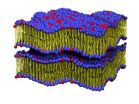(Press-News.org) Children and adolescents see thousands of food commercials each year and most of them advertise junk foods high in sugar, fat and salt. Yet, we know almost nothing about how all of this food marketing impacts the brain, especially for teens. New research suggests that food commercials "get under the skin" of teens by activating reward regions when they are viewing ads for milk shakes, or burgers, or colas. The bad news for us is that this can result in weight gain and obesity.
In the first prospective longitudinal study to investigate neural response to unhealthy food commercials, Oregon Research Institute (ORI) scientists Sonja Yokum, Ph.D. and Eric Stice, Ph.D., in collaboration with colleagues from the University of Michigan, the Yale Rudd Center for Food Policy & Obesity, and Duke University used functional Magnetic Resonance Imaging (fMRI) to scan 30 adolescents (14-17 years old) while they watched the television show "Mythbusters." The television show included 20 food commercials and 20 non-food commercials that are frequently advertised to adolescents. Yokum's team found that adolescents showing elevated responses in reward regions to food commercials gained more weight over one year follow-up compared to those with less activation in these brain regions. The magnitude of these effects is much larger than the effects for established risk factors for future weight gain, such as parental obesity.
"This research tells us how food commercials may be negatively impacting teens between the ages of 14 and 17 at-risk for obesity," noted Yokum. "This is important to consider in the debate about whether to restrict food advertising for unhealthy foods to young teens."
It will be important to replicate this study with larger samples, but this finding is an important contribution to the literature. This research suggests there are individual differences in neural vulnerability to food commercials that appear to identify youth at risk for excess weight gain. In combination with established risk factors of weight gain during adolescence such as sedentary behavior and parental obesity, elevated reward-response to commercials may be an important contributor and a potential target for prevention and intervention programs.
INFORMATION:
The research findings are published online in an original article in the August issue of Obesity: A Research Journal.
This research was supported by National Institute of Diabetes and Digestive and Kidney Diseases grant (R01 DK80760, 8/09-7/14), Rudd Foundation, and the Robert Wood Johnson Foundation.
Oregon Research Institute is a non-profit, independent behavioral research center with headquarters in Eugene, Oregon. Founded in 1960, it also has offices in Portland, Oregon and Albuquerque, New Mexico.
Teens' neural response to food commercials predicts future weight gain
New research suggests that food commercials 'get under the skin' of teens by activating reward regions when they are viewing ads for milk shakes, or burgers, or colas
2014-09-10
ELSE PRESS RELEASES FROM THIS DATE:
New research finds that smartphone apps are a useful tool for diet monitoring
2014-09-10
TEMPE, Ariz. (Sept. 10, 2014) - The ability and consistency in monitoring one's diet, but not dietary quality, improves with the use of smartphone applications, according to new research by Arizona State University health scientists published in the latest issue of the Journal of Nutrition Education and Behavior.
Researchers Christopher Wharton, Carol Johnston, Barbara Cunningham and Danielle Sterner at ASU's School of Nutrition and Health Promotion authored the study.
The study compared the effectiveness of a popular smartphone application called "Lose It" for dietary ...
Working during depression can offer health benefits to employees
2014-09-10
The collaborative study between the University Of Melbourne and the Menzies Research Institute at the University of Tasmania is the first to estimate the long-term costs and health outcomes of depression-related absence as compared to individuals who continue to work among employees with depression in Australia.
Lead researcher Dr Fiona Cocker from the Melbourne School of Population and Global Health said a greater understanding of the costs and consequences of both absenteeism and presenteeism would allow for more informed recommendations to be made to the benefit of ...
Researchers watch lipid molecules in motion
2014-09-10
Researchers from Göttingen in collaboration with colleagues from Augsburg have 'filmed' the movement of lipid molecules using an X-ray stroboscope at DESY. In the scientific journal Physical Review Letters, researchers lead by Professor Tim Salditt of the University of Göttingen report that their study offers new insights into the dynamics of biomolecules, which compose materials such as cell membranes. The cell membranes consist of a double layer of lipid molecules; the properties of the membranes are of great interest because they control which substances enter and exit ...
Pain tolerance levels between men and women are similar
2014-09-10
Resilience, a person's ability to overcome adverse circumstances, is the main quality associated with pain tolerance among patients and their adjustment to chronic pain. This is the result of a new study carried out at the University of Málaga that shows that the effect of gender on this ability is not as significant as originally thought.
Over the years a number of clinical trials have shown important gender differences with regard to susceptibility to pain through illness, effectiveness of medications and recovery after anaesthetic. Furthermore, these results coincide ...
UM study finds air pollution harmful to young brains
2014-09-10
MISSOULA, Mont. – Pollution in many cities threatens the brain development in children.
Findings by University of Montana Professor Dr. Lilian Calderón-Garcidueñas, MA, MD, Ph.D., and her team of researchers reveal that children living in megacities are at increased risk for brain inflammation and neurodegenerative changes, including Alzheimer's or Parkinson's disease.
Calderón-Garcidueñas' findings are detailed in a paper titled "Air pollution and children: Neural and tight junction antibodies and combustion metals, the role of barrier breakdown and brain ...
Lady baboons with guy pals live longer
2014-09-10
DURHAM, N.C. –- Numerous studies have linked social interaction to improved health and survival in humans, and new research confirms that the same is true for baboons.
A long-term study of more than 200 wild female baboons from the plains of southern Kenya finds that the most sociable females –- measured by how often they engaged in social grooming relative to their peers -- live two to three years longer than their socially isolated counterparts.
Socializing with males gave females an even bigger longevity boost than socializing with other females, the researchers ...
New study reconstructs mega-earthquakes timeline in Indian Ocean
2014-09-10
MIAMI – A new study on the frequency of past giant earthquakes in the Indian Ocean region shows that Sri Lanka, and much of the Indian Ocean, is affected by large tsunamis at highly variable intervals, from a few hundred to more than one thousand years. The findings suggest that the accumulation of stress in the region could generate as large, or even larger tsunamis than the one that resulted from the 2004 magnitude-9.2 Sumatra earthquake.
Researchers from the University of Miami (UM) Rosenstiel School of Marine and Atmospheric Science and the University of Peradeniya ...
Mystery solved: 'Sailing stones' of Death Valley seen in action for the first time
2014-09-10
Racetrack Playa is home to an enduring Death Valley mystery. Littered across the surface of this dry lake, also called a "playa," are hundreds of rocks – some weighing as much as 320 kilograms (700 pounds) – that seem to have been dragged across the ground, leaving synchronized trails that can stretch for hundreds of meters.
What powerful force could be moving them? Researchers have investigated this question since the 1940s, but no one has seen the process in action – until now.
In a paper published in the journal PLOS ONE on Aug. 27, a team led by Scripps Institution ...
UC San Diego researchers build first 500 GHz photon switch
2014-09-10
The work took nearly four years to complete and it opens a fundamentally new direction in photonics – with far-reaching potential consequences for the control of photons in optical fiber channels.
Researchers at the University of California, San Diego have built the first 500 Gigahertz (GHz) photon switch. "Our switch is more than an order of magnitude faster than any previously published result to date," said UC San Diego electrical and computer engineering professor Stojan Radic. "That exceeds the speed of the fastest lightwave information channels in use today."
According ...
This star cluster is not what it seems
2014-09-10
The Milky Way galaxy is orbited by more than 150 globular star clusters, which are balls of hundreds of thousands of old stars dating back to the formation of the galaxy. One of these, along with several others in the constellation of Sagittarius (The Archer), was found in the late eighteenth century by the French comet hunter Charles Messier and given the designation Messier 54.
For more than two hundred years after its discovery Messier 54 was thought to be similar to the other Milky Way globulars. But in 1994 it was discovered that it was actually associated with a ...
LAST 30 PRESS RELEASES:
Air pollution exposure and birth weight
Obstructive sleep apnea risk and mental health conditions among older adults
How talking slows eye movements behind the wheel
The Ceramic Society of Japan’s Oxoate Ceramics Research Association launches new international book project
Heart-brain connection: international study reveals the role of the vagus nerve in keeping the heart young
Researchers identify Rb1 as a predictive biomarker for a new therapeutic strategy in some breast cancers
Survey reveals ethical gaps slowing AI adoption in pediatric surgery
Stimulant ADHD medications work differently than thought
AI overestimates how smart people are, according to HSE economists
HSE researchers create genome-wide map of quadruplexes
Scientists boost cell "powerhouses" to burn more calories
Automatic label checking: The missing step in making reliable medical AI
Low daily alcohol intake linked to 50% heightened mouth cancer risk in India
American Meteorological Society announces Rick Spinrad as 2026 President-Elect
Biomass-based carbon capture spotlighted in newly released global climate webinar recording
Illuminating invisible nano pollutants: advanced bioimaging tracks the full journey of emerging nanoscale contaminants in living systems
How does age affect recovery from spinal cord injury?
Novel AI tool offers prognosis for patients with head and neck cancer
Fathers’ microplastic exposure tied to their children’s metabolic problems
Research validates laboratory model for studying high-grade serous ovarian cancer
SIR 2026 delivers transformative breakthroughs in minimally invasive medicine to improve patient care
Stem Cell Reports most downloaded papers of 2025 highlight the breadth and impact of stem cell research
Oxford-led study estimates NHS spends around 3% of its primary and secondary care budget on the health impacts of heat and cold in England
A researcher’s long quest leads to a smart composite breakthrough
Urban wild bees act as “microbial sensors” of city health.
New study finds where you live affects recovery after a hip fracture
Forecasting the impact of fully automated vehicle adoption on US road traffic injuries
Alcohol-related hospitalizations from 2016 to 2022
Semaglutide and hospitalizations in patients with obesity and established cardiovascular disease
Researchers ‘listen in’ to embryo-mother interactions during implantation using a culture system replicating the womb lining
[Press-News.org] Teens' neural response to food commercials predicts future weight gainNew research suggests that food commercials 'get under the skin' of teens by activating reward regions when they are viewing ads for milk shakes, or burgers, or colas






